Preparation and Performance Characterization of an Active Luminous Coating for Asphalt Pavement Marking
Abstract
1. Introduction
2. Materials and Experimental Methods
2.1. Raw Materials
2.1.1. Phosphorescent Material
2.1.2. Film-Forming Materials
2.1.3. Pigments and Fillers
2.1.4. Auxiliaries
2.2. Experimental Methods
2.2.1. Coating Treatment of Luminescent Powder
2.2.2. Preparation of Phosphorescent Paint
2.2.3. Characterization of the Luminous Marking Coating
2.2.4. Experimental Design with Response Surface Methodology (RSM)
2.2.5. Usage Performance of Luminous Marking Coating
3. Results and Discussions
3.1. Single-Factor Optimization of Components in Marking Coatings
3.1.1. Color and Particle Size of ALP
3.1.2. Dosage of ALP
3.1.3. Dosage of Film-Forming Auxiliaries
3.1.4. Dosage of Pigment
3.1.5. Dosage of the Filler
3.1.6. Dosage of FSP
3.1.7. Dosages of MOP and FMP
3.2. Multi-Factor Optimization Using RSM
3.3. Performance Characteristics of the Coatings
3.3.1. Physical Properties
3.3.2. Excitation and Emission Properties
3.3.3. Micromorphology
3.3.4. Optimization of Coating Thickness
3.3.5. Durability
4. Conclusions
Author Contributions
Funding
Institutional Review Board Statement
Informed Consent Statement
Data Availability Statement
Acknowledgments
Conflicts of Interest
References
- Hadizadeh, E.; Pazokifard, S.; Mirabedini, S.; Ashrafian, H. Optimizing practical properties of MMA-based cold plastic road marking paints using mixture experimental design. Prog. Org. Coat. 2020, 147, 105784. [Google Scholar] [CrossRef]
- Coves-Campos, A.; Bañón, L.; Coves-García, J.A.; Ivorra, S. In Situ Study of Road Marking Durability Using Glass Microbeads and Antiskid Aggregates as Drop-On Materials. Coatings 2018, 8, 371. [Google Scholar] [CrossRef]
- Burghardt, T.E.; Ettinger, K.; Köck, B.; Hauzenberger, C. Glass beads for road markings and other industrial usage: Crystallinity and hazardous elements. Case Stud. Constr. Mater. 2022, 17, e01213. [Google Scholar] [CrossRef]
- Burghardt, T.E.; Pashkevich, A. Materials selection for structured horizontal road markings: Financial and environmental case studies. Eur. Transp. Res. Rev. 2020, 12, 11. [Google Scholar] [CrossRef]
- Zhu, B.; Song, C.; Guo, Z.; Zhang, Y.; Zhou, Z. Effectiveness of Active Luminous Lane Markings on Highway at Night: A Driving Simulation Study. Sustainability 2021, 13, 1043. [Google Scholar] [CrossRef]
- Reagan, I.J.; Brumbelow, M.L. Drivers’ detection of roadside targets when driving vehicles with three headlight systems during high beam activation. Accid. Anal. Prev. 2017, 99, 44–50. [Google Scholar] [CrossRef]
- Burghardt, T.E.; Maki, E.; Pashkevich, A. Yellow thermoplastic road markings with high retroreflectivity: Demonstration study in Texas. Case Stud. Constr. Mater. 2021, 14, e00539. [Google Scholar] [CrossRef]
- Mehri, A.; Sajedifar, J.; Abbasi, M.; Tajbakhsh, M.A. The effect of veiling luminance on the disability glare of car headlamps designed in Iran. Int. J. Occup. Saf. Ergon. 2021, 28, 1213–1218. [Google Scholar] [CrossRef]
- Ackaah, W.; Apuseyine, B.A.; Afukaar, F.K. Road traffic crashes at night-time: Characteristics and risk factors. Int. J. Inj. Control. Saf. Promot. 2020, 27, 392–399. [Google Scholar] [CrossRef]
- Hussein, M.; Sayed, T.; El-Basyouny, K.; de Leur, P. Investigating safety effects of wider longitudinal pavement markings. Accid. Anal. Prev. 2020, 142, 105527. [Google Scholar] [CrossRef]
- Xu, L.; Chen, Z.; Li, X.; Xiao, F. Performance, environmental impact and cost analysis of marking materials in pavement engineering, the-state-of-art. J. Clean. Prod. 2021, 294, 126302. [Google Scholar] [CrossRef]
- Al-Nami, S.Y.; Al-Qahtani, S.D.; Snari, R.M.; Ibarhiam, S.F.; Alfi, A.A.; Aldawsari, A.M.; El-Metwaly, N.M. Preparation of photoluminescent and anticorrosive epoxy paints immobilized with nanoscale graphene from sugarcane bagasse agricultural waste. Environ. Sci. Pollut. Res. 2022, 29, 60173–60188. [Google Scholar] [CrossRef]
- Liang, B.; Li, S.; Li, S. Self-Storage and Auto-Luminous Emergency Escape System in Tunnel. Transp. Stand 2014, 42, 189. [Google Scholar]
- Rojas-Hernandez, R.E.; Rubio-Marcos, F.; Rodriguez, M.Á.; Fernandez, J.F. Long lasting phosphors: SrAl2O4: Eu, Dy as the most studied material. Renew. Sustain. Energy Rev. 2018, 81, 2759–2770. [Google Scholar] [CrossRef]
- Nance, J.; Sparks, T.D. From streetlights to phosphors: A review on the visibility of roadway markings. Prog. Org. Coat. 2020, 148, 105749. [Google Scholar] [CrossRef]
- Li, S.; Yu, L.; Man, X.; Zhong, J.; Sun, W. Photoluminescent properties of Eu3+-Eu2+ activated MAl2SixO2x+4 (M = Mg, Ca, Sr, Ba) phosphors prepared in air. Luminescence 2018, 33, 391–398. [Google Scholar] [CrossRef]
- Paterson, A.S.; Raja, B.; Garvey, G.; Kolhatkar, A.; Hagström, A.E.V.; Kourentzi, K.; Lee, T.R.; Willson, R.C. Persistent Luminescence Strontium Aluminate Nanoparticles as Reporters in Lateral Flow Assays. Anal. Chem. 2014, 86, 9481–9488. [Google Scholar] [CrossRef]
- Bessière, A.; Sharma, S.K.; Basavaraju, N.; Priolkar, K.R.; Binet, L.; Viana, B.; Bos, A.J.J.; Maldiney, T.; Richard, C.; Scherman, D.; et al. Storage of Visible Light for Long-Lasting Phosphorescence in Chromium-Doped Zinc Gallate. Chem. Mater. 2014, 26, 1365–1373. [Google Scholar] [CrossRef]
- Ju, Z.; Wei, R.; Zheng, J.; Gao, X.; Zhang, S.; Liu, W. Synthesis and phosphorescence mechanism of a reddish orange emissive long afterglow phosphor Sm3+-doped Ca2SnO4. Appl. Phys. Lett. 2011, 98, 121906. [Google Scholar] [CrossRef]
- Burghardt, T.E.; Pashkevich, A. Emissions of Volatile Organic Compounds from road marking paints. Atmos. Environ. 2018, 193, 153–157. [Google Scholar] [CrossRef]
- Burghardt, T.E.; Pashkevich, A. Green Public Procurement criteria for road marking materials from insiders’ perspective. J. Clean. Prod. 2021, 298, 126521. [Google Scholar] [CrossRef]
- Fatemi, S.; Varkani, M.K.; Ranjbar, Z.; Bastani, S. Optimization of the water-based road-marking paint by experimental design, mixture method. Prog. Org. Coat. 2006, 55, 337–344. [Google Scholar] [CrossRef]
- Nance, J.; Sparks, T.D. Comparison of coatings for SrAl2O4:Eu2+,Dy3+ powder in waterborne road striping paint under wet conditions. Prog. Org. Coat. 2020, 144, 105637. [Google Scholar] [CrossRef]
- Bi, Y.; Pei, J.; Chen, Z.; Zhang, L.; Li, R.; Hu, D. Preparation and characterization of luminescent road-marking paint. Int. J. Pavement Res. Technol. 2020, 14, 252–258. [Google Scholar] [CrossRef]
- Lin, H.; Chen, F.; Zhang, H. Active luminous road markings: A comprehensive review of technologies, materials, and challenges. Constr. Build. Mater. 2023, 363. [Google Scholar] [CrossRef]
- Auzins, K.; Zolotarjovs, A.; Bite, I.; Laganovska, K.; Vitola, V.; Smits, K.; Millers, D. Production of Phosphorescent Coatings on 6082 Aluminum Using Sr0.95Eu0.02Dy0.03Al2O4−δ Powder and Plasma Electrolytic Oxidation. Coatings 2019, 9, 865. [Google Scholar] [CrossRef]
- Lan, Y.; Wang, D.; Xie, D.; Tan, J.; Li, B.; Zhang, M.; Chen, Y. Preparation of Red Phosphor Sr2Si5N8: Eu2+ by Pellet Method and Its Optical Characteristics. Coatings 2021, 11, 283. [Google Scholar] [CrossRef]
- El-Newehy, M.; El-Hamshary, H.; Abdulhameed, M.M.; Tawfeek, A.M. Immobilization of lanthanide doped aluminate phosphor onto recycled polyester toward the development of long-persistent photoluminescence smart window. Luminescence 2022, 37, 610–621. [Google Scholar] [CrossRef]
- Xiao, Y.; Pham, B.T.; Guo, M.-Z.; Ling, T.-C. Influence of luminescent powder type and characteristic on the glow light performance of architectural glass mortar. J. Build. Eng. 2022, 58, 105021. [Google Scholar] [CrossRef]
- GB/T 6750-2007; Paints and Varnishes—Determination of Density—Pyknometer Method. General Administration of Quality Supervision, Inspection and Quarantine of the People’s Republic of China; Standardization Administration of the P.R.C: Beijing, China, 2007.
- GB/T 9269-2009; Determination of Viscosity of Paints and Coatings—Stormer Viscosimeter Method. General Administration of Quality Supervision, Inspection and Quarantine of the People’s Republic of China; Standardization Administration of the P.R.C: Beijing, China, 2009.
- GB/T 24981.2-2020; Test Methods of Rare Earth Long Afterglow Phosphors—Part 2: Determination of Afterglow Brightness. State Administration of Market Supervision and Administration; Standardization Administration of the P.R.C: Beijing, China, 2020.
- Mohamed, M.; Abdel-Rahim, A.; Kassem, E.; Chang, K.; McDonald, A.G. Laboratory-Based Evaluation of Pavement Marking Characteristics. J. Transp. Eng. Part B Pavements 2020, 146, 04020016. [Google Scholar] [CrossRef]
- Onoda, H.; Fujikado, S.; Toyama, T. Preparation of titanium phosphate white pigments with titanium sulfate and their powder properties. J. Adv. Ceram. 2014, 3, 132–136. [Google Scholar] [CrossRef]
- Burghardt, T.E.; Babić, D.; Pashkevich, A. Performance and environmental assessment of prefabricated retroreflective spots for road marking. Case Stud. Constr. Mater. 2021, 15, e00555. [Google Scholar] [CrossRef]
- Overbeek, A. Polymer heterogeneity in waterborne coatings. J. Coatings Technol. Res. 2009, 7, 1–21. [Google Scholar] [CrossRef]
- Sikandar, M.A.; Ahmad, W.; Khan, M.H.; Ali, F.; Waseem, M. Effect of water resistant SiO2 coated SrAl2O4: Eu2+ Dy3+ persistent luminescence phosphor on the properties of Portland cement pastes. Constr. Build. Mater. 2019, 228, 116823. [Google Scholar] [CrossRef]
- Alvarez, V.; Paulis, M. Effect of acrylic binder type and calcium carbonate filler amount on the properties of paint-like blends. Prog. Org. Coatings 2017, 112, 210–218. [Google Scholar] [CrossRef]
- Autelitano, F.; Giuliani, F. Daytime and nighttime color appearance of pigmented asphalt surface treatments. Constr. Build. Mater. 2019, 207, 98–107. [Google Scholar] [CrossRef]
- Sun, D.; Zhang, Y. Preparation of fast-drying waterborne nano-complex traffic-marking paint. J. Coatings Technol. Res. 2010, 9, 151–156. [Google Scholar] [CrossRef]
- GB/T 1768-2006; Paints and Varnishes—Determination of Resistance to Abrasion—Rotating Abrasive Rubber Wheel Method. Standardization Administration of the People’s Republic of China: Beijing, China, 2006.
- GB/T 1720-2020; Circle-Drawing Test of Coating Films. Standardization Administration of the People’s Republic of China: Beijing, China, 2020.
- Pasetto, M.; Barbati, S.D. Experimental Investigation on Road Marking Distress Evolution: Beyond Testing, Quality Assurance and Maintenance Improvement. In Proceedings of the 8th International Conference on Road and Airfield Pavement Technology (ICPT), Taipei, Taiwan, 14–18 July 2013; pp. 846–853. [Google Scholar]
- Lu, H.; Zhang, L.; Xi, X.; Nie, Z. Optimization of pulse bi-directional electrolysis in-situ synthesis of tungsten carbide by response surface methodology. Int. J. Refract. Met. Hard Mater. 2023, 111, 106063. [Google Scholar] [CrossRef]
- Nag, A.; Hayakawa, T.; Minase, M.; Ogawa, M. Organophilic Clay with Useful Whiteness. Langmuir 2022, 38, 2979–2985. [Google Scholar] [CrossRef]
- Taheri, M.; Jahanfar, M.; Ogino, K. Wear Properties of Nanocomposite Traffic Marking Paint. J. Nanomater. 2018, 2018, 2569249. [Google Scholar] [CrossRef]
- Zhou, Y.; Seto, T.; Wang, Y. Strategies for Enhancement Luminance of Sub-Micrometer Phosphor: A Sub-Micrometer Narrow-Band Red Phosphor with Ultrahigh Thermal Stability. Laser Photon-Rev. 2022, 17, 2200462. [Google Scholar] [CrossRef]
- Kaya, S.Y.; Karacaoglu, E.; Karasu, B. Particle size influence of starting batches on phosphorescence behaviour of Sr4Al14O25 based bluish green phosphors. Adv. Appl. Ceram. 2012, 111, 393–397. [Google Scholar] [CrossRef]
- Sarkodie, B.; Acheampong, C.; Asinyo, B.; Zhang, X.; Tawiah, B. Characteristics of pigments, modification, and their functionalities. Color Res. Appl. 2019, 44, 396–410. [Google Scholar] [CrossRef]
- JT/T 280-2004; Pavement Marking Paint. Ministry of Transport of the People’s Republic of China: Beijing, China, 2004.
- Xu, J.; Shi, Y.; Li, J.; Cui, G.; Gu, G. Carbon Aerogel Based Waterborne Ultra-Black Coatings with High Light Absorption. Coatings 2021, 11, 563. [Google Scholar] [CrossRef]
- Dias, C.; Veloso, R.; Maia, J.; Ramos, N.; Ventura, J. Oversight of radiative properties of coatings pigmented with TiO2 nanoparticles. Energy Build. 2022, 271, 112296. [Google Scholar] [CrossRef]
- Huang, M.; Yu, X.; Wan, J.; Du, M.; Wang, X.; Sun, Q.; Tang, G. All-day effective radiative cooling by optically selective and thermally insulating mesoporous materials. Sol. Energy 2022, 235, 170–179. [Google Scholar] [CrossRef]
- Zou, Y.; Xu, H.; Xu, S.; Chen, A.; Wu, S.; Amirkhanian, S.; Wan, P.; Gao, X. Investigation of the moisture damage and the erosion depth on asphalt. Constr. Build. Mater. 2023, 369, 130503. [Google Scholar] [CrossRef]



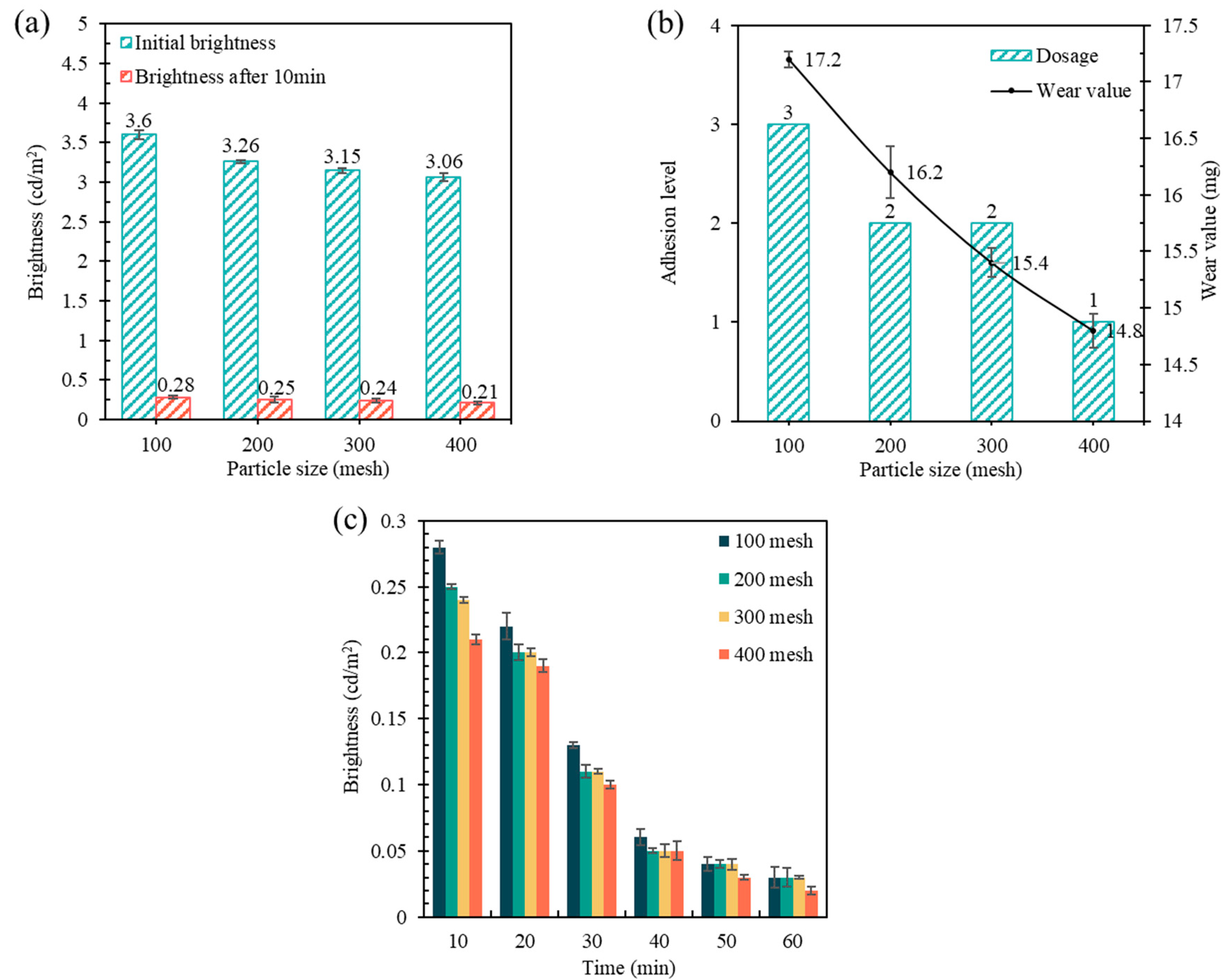
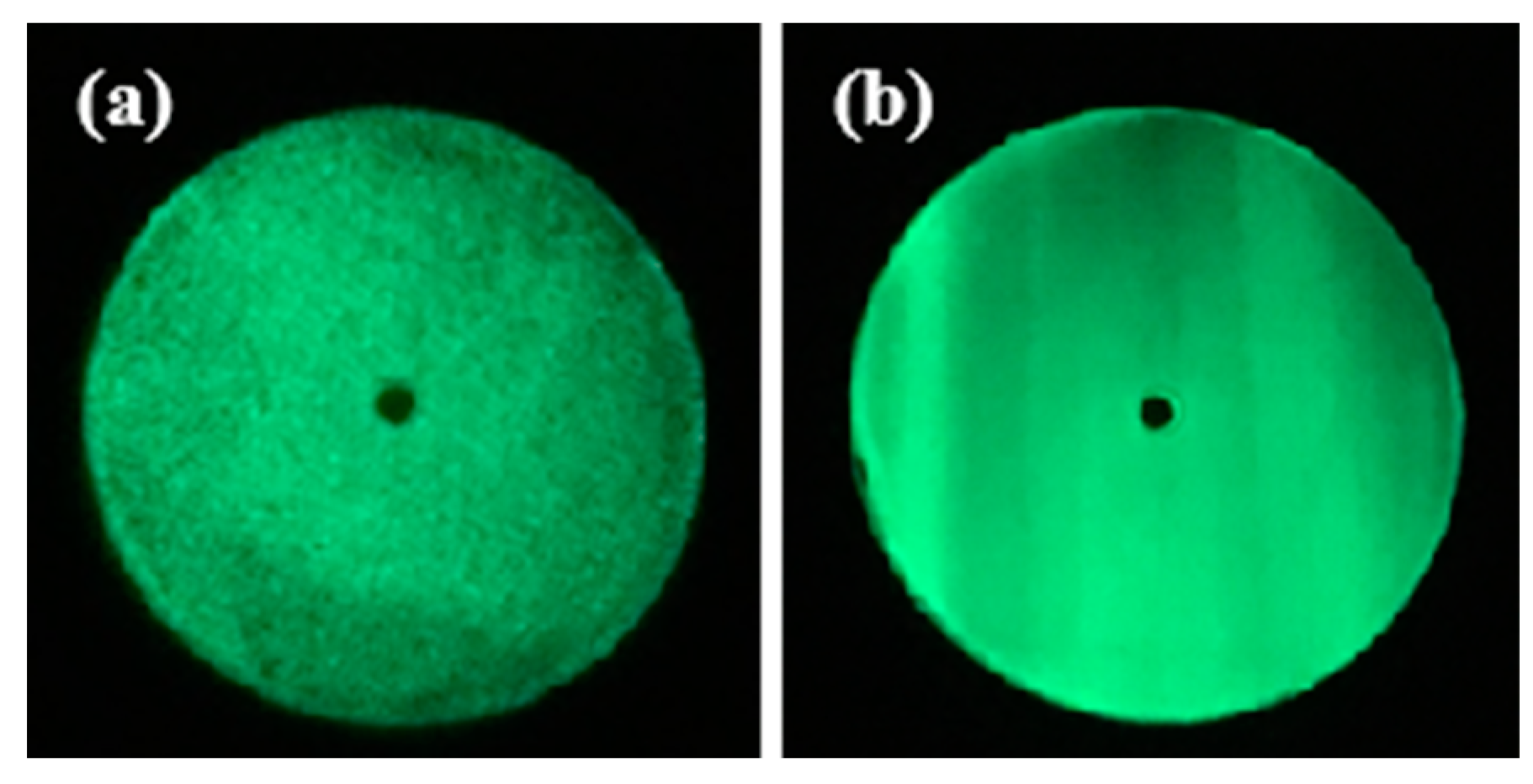
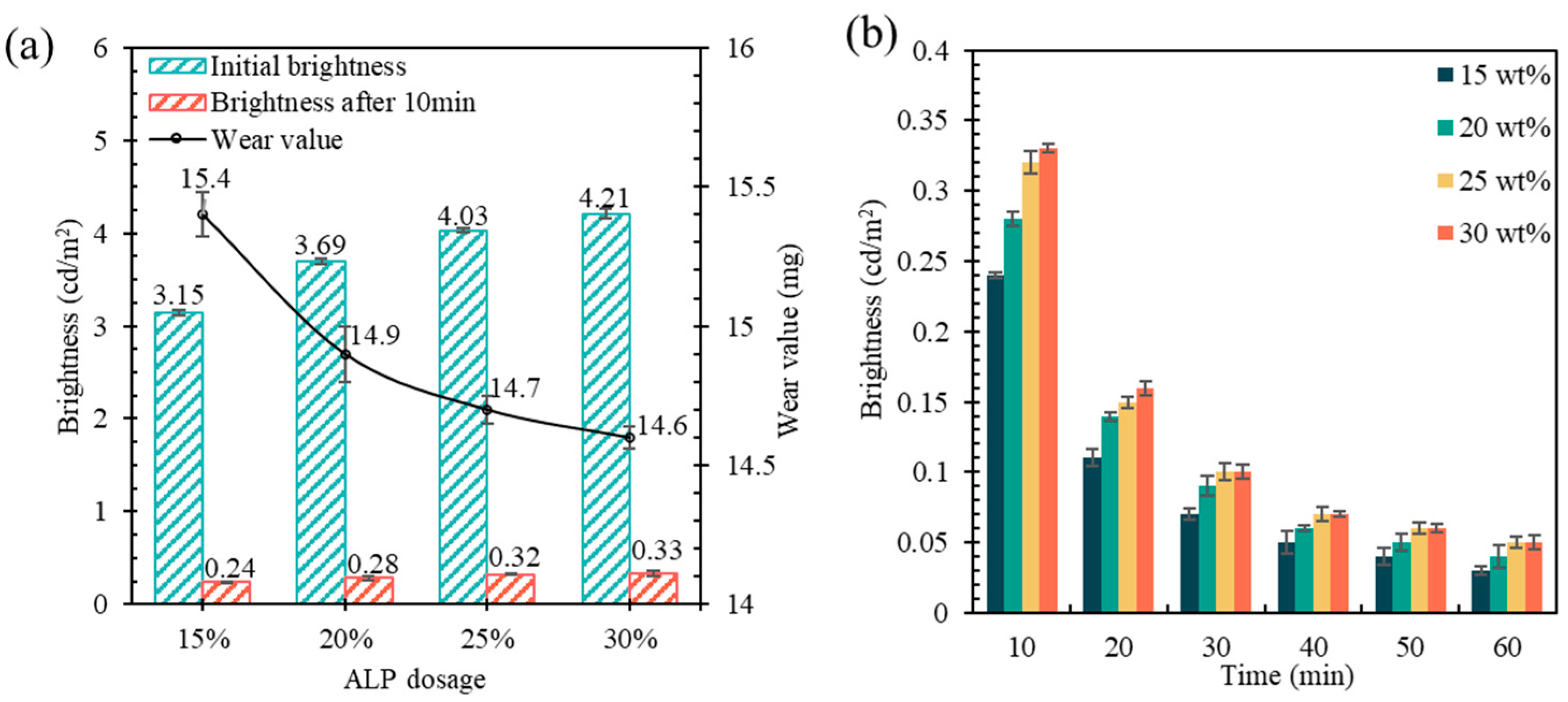



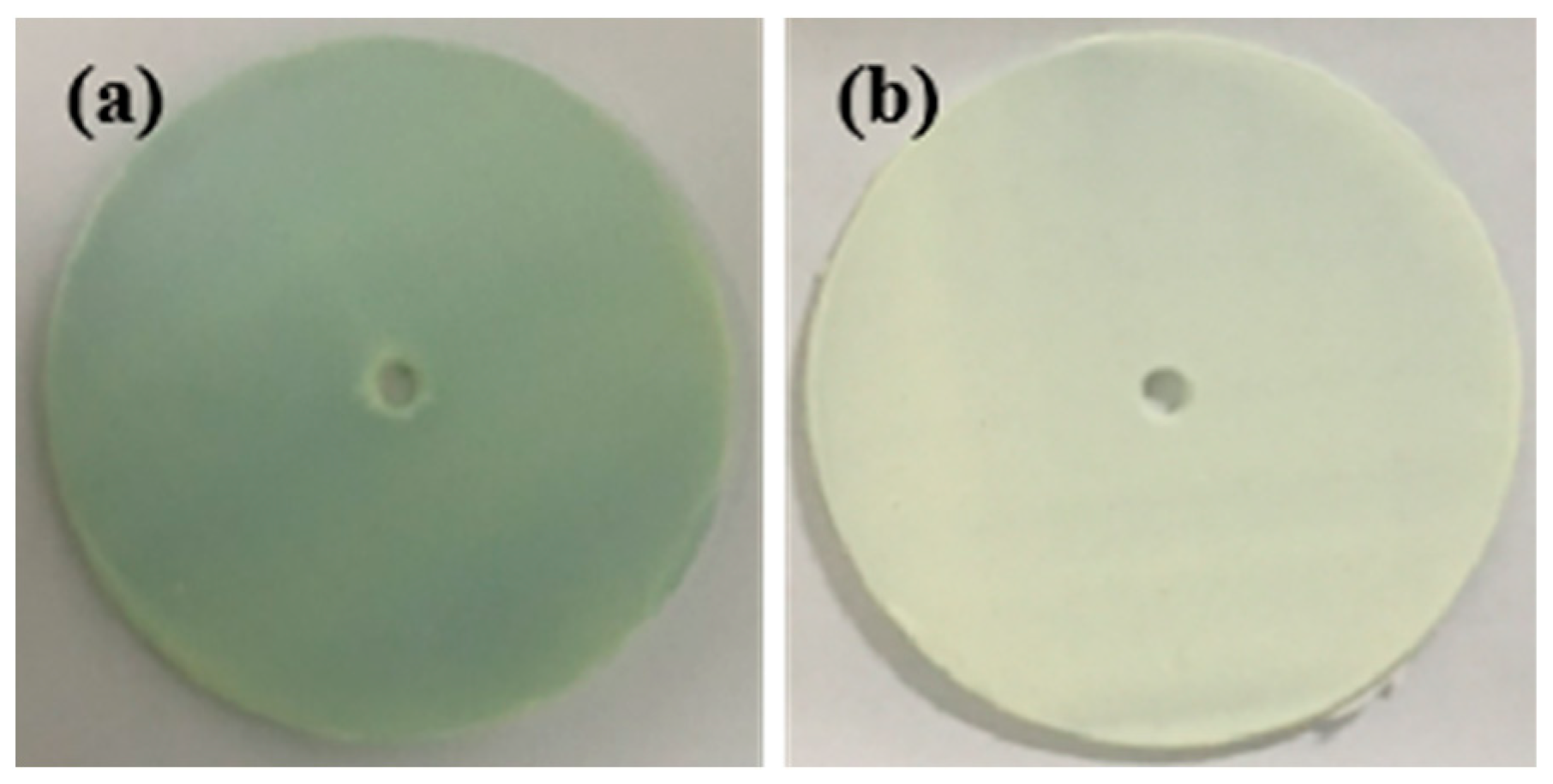
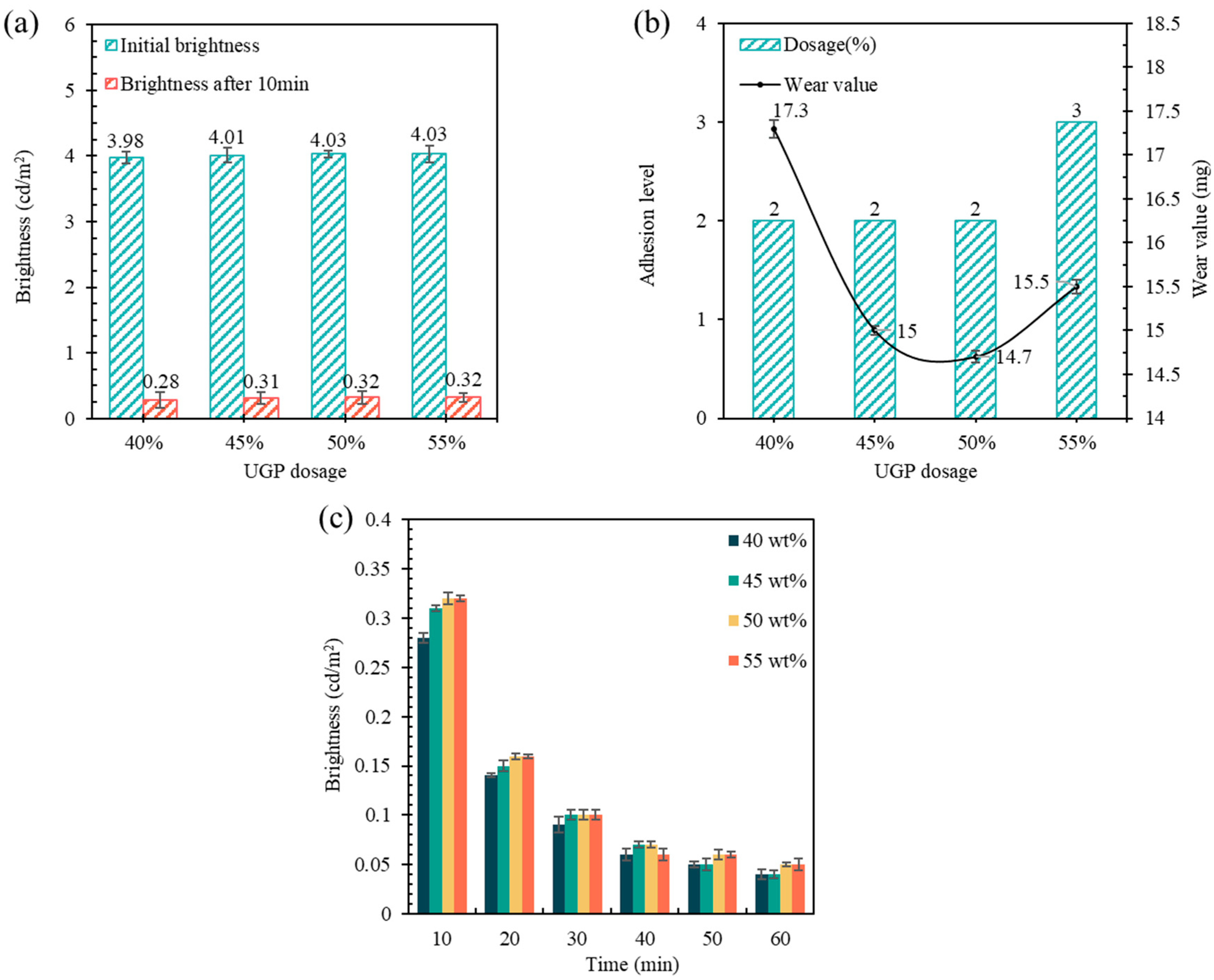


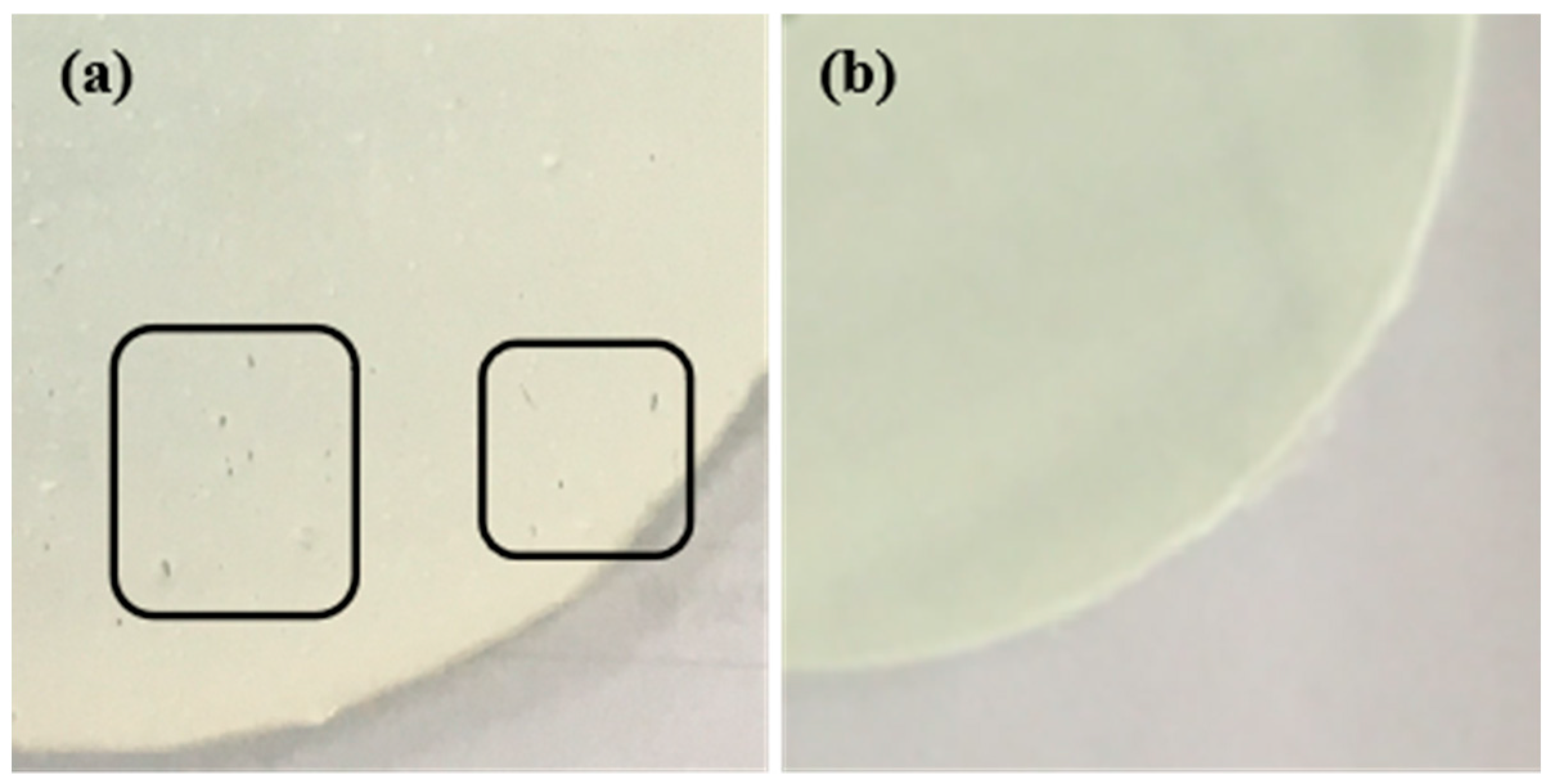


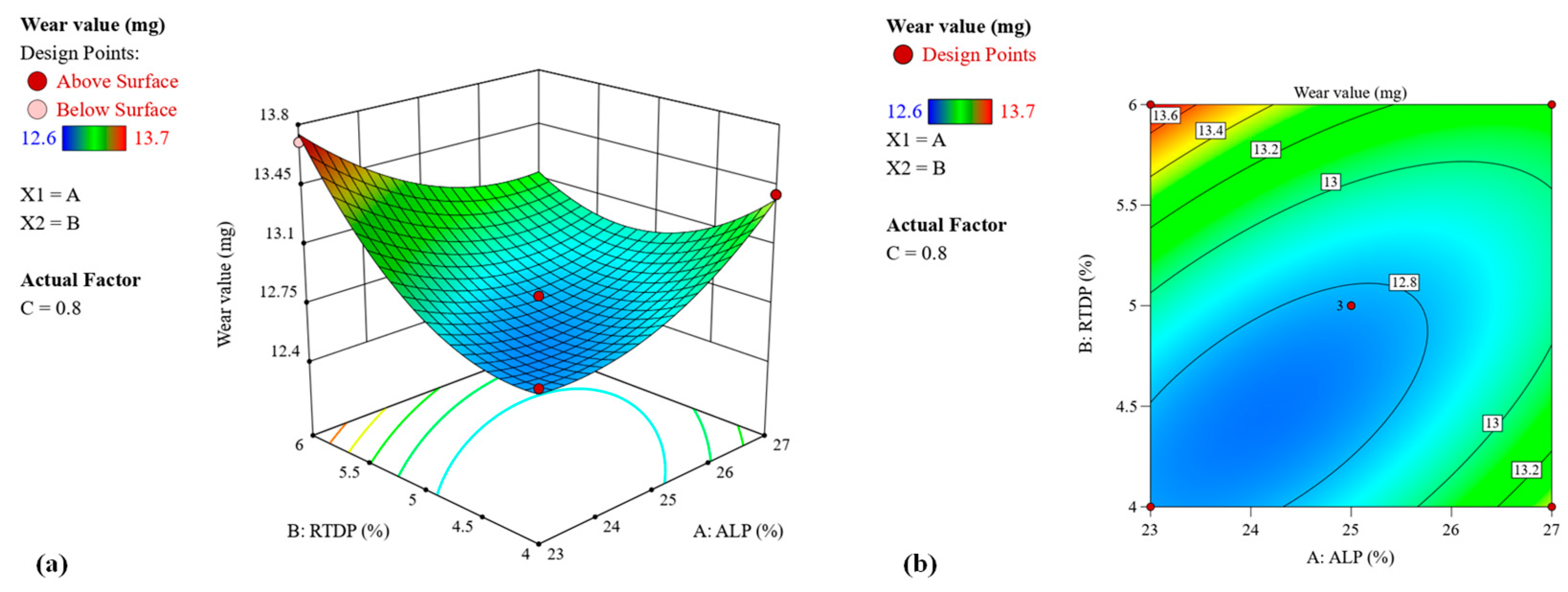


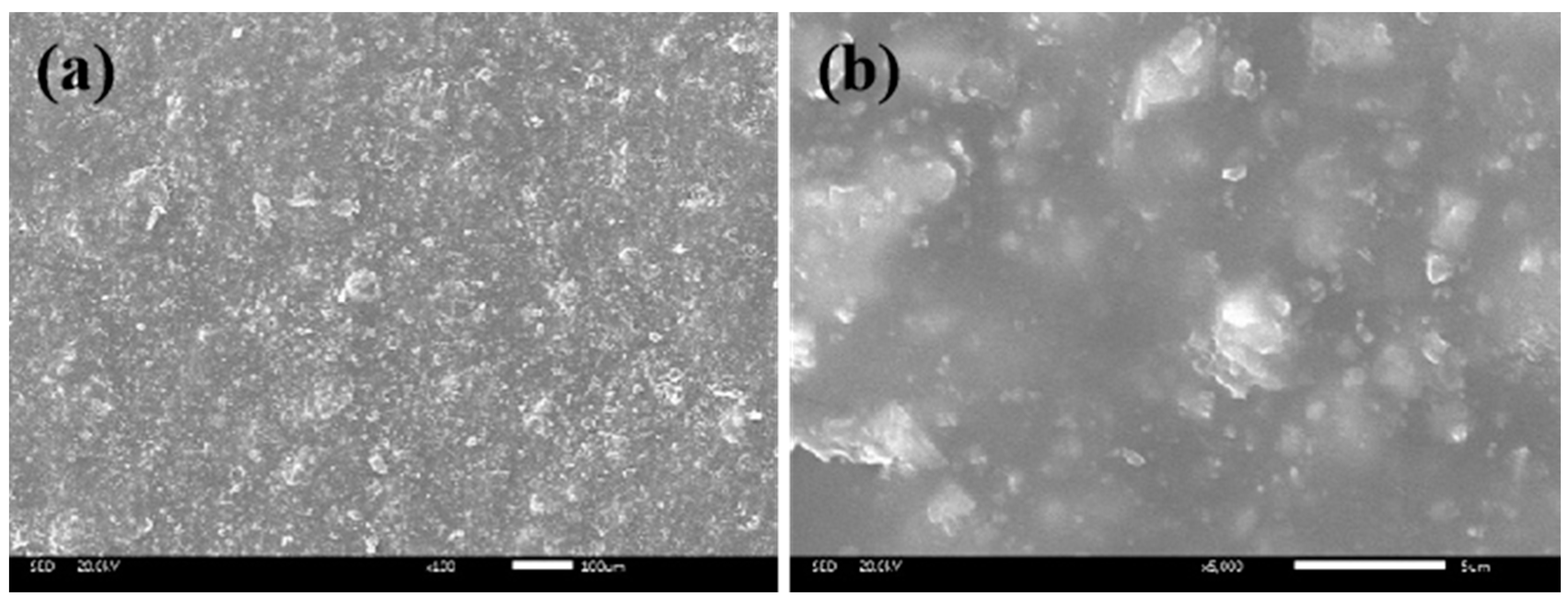

| Properties | Unit | Results | Methods [30,31,32] |
|---|---|---|---|
| Particle size | mesh | 100–400 | / |
| Density (25 °C) | g∙cm−3 | 3.2 | GB/T 6750-2007 |
| Stimulation time | min | 10–15 | GB/T 24981.2-2020 |
| Luminous time | h | 8–10 | GB/T 24981.2-2020 |
| Decomposition temperature | °C | 800 | GB/T 9269-2009 |
| Yellow-Green | Orange | Sky Blue | |
|---|---|---|---|
| Natural | 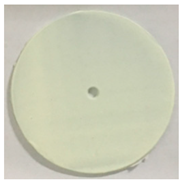 |  | 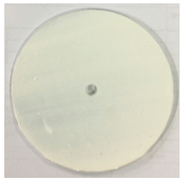 |
| Luminous |  | 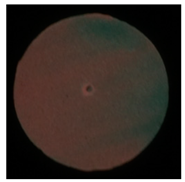 |  |
| Run | Coded Variable | Real Variable | Response Value | ||||||
|---|---|---|---|---|---|---|---|---|---|
| X1 | X2 | X3 | A: ALP (%) | B: RTDP (%) | C: FSP (%) | (cd/m2) | (cd/m2) | (mg) | |
| 1 | 1 | 0 | −1 | 27 | 5 | 0.7 | 4.15 | 0.46 | 12.7 |
| 2 | 1 | −1 | 0 | 27 | 4 | 0.8 | 4.13 | 0.65 | 13.4 |
| 3 | 1 | 0 | 1 | 27 | 5 | 0.9 | 4.17 | 0.68 | 13.3 |
| 4 | 0 | 0 | 0 | 25 | 5 | 0.8 | 4.01 | 0.61 | 12.7 |
| 5 | 0 | 0 | 0 | 25 | 5 | 0.8 | 4.02 | 0.63 | 12.8 |
| 6 | 0 | −1 | 1 | 25 | 4 | 0.9 | 4.00 | 0.64 | 13.1 |
| 7 | −1 | −1 | 0 | 23 | 4 | 0.8 | 3.93 | 0.52 | 12.8 |
| 8 | −1 | 1 | 0 | 23 | 6 | 0.8 | 3.96 | 0.53 | 13.7 |
| 9 | −1 | 0 | −1 | 23 | 5 | 0.7 | 3.94 | 0.38 | 12.9 |
| 10 | 1 | 1 | 0 | 27 | 6 | 0.8 | 4.14 | 0.65 | 13.1 |
| 11 | 0 | 1 | −1 | 25 | 6 | 0.7 | 4.00 | 0.41 | 13.2 |
| 12 | 0 | 1 | 1 | 25 | 6 | 0.9 | 4.03 | 0.66 | 13.4 |
| 13 | 0 | −1 | −1 | 25 | 4 | 0.7 | 4.01 | 0.39 | 12.6 |
| 14 | −1 | 0 | 1 | 23 | 5 | 0.9 | 3.96 | 0.63 | 13.0 |
| 15 | 0 | 0 | 0 | 25 | 5 | 0.8 | 4.05 | 0.62 | 12.8 |
| Source | Z1 | Z2 | Z3 | ||||||
|---|---|---|---|---|---|---|---|---|---|
| F-Value | p-Value | Sig. | F-Value | p-Value | Sig. | F-Value | p-Value | Sig. | |
| Model | 40.8413 | 0.0004 | S. | 39.1348 | 0.0004 | S. | 40.4106 | 0.0004 | S. |
| A: ALP | 342.8571 | <0.0001 | S. | 40.5618 | 0.0014 | S. | 0.3261 | 0.5927 | Ins. |
| B: RTDP | 1.9286 | 0.2236 | Ins. | 0.7022 | 0.4402 | Ins. | 73.3696 | 0.0004 | S. |
| C: FSP | 1.9286 | 0.2236 | Ins. | 264.2978 | <0.0001 | S. | 63.9130 | 0.0005 | S. |
| AB | 0.4286 | 0.5416 | Ins. | 0.0562 | 0.8220 | Ins. | 93.9130 | 0.0002 | S. |
| AC | 0.0000 | 1.0000 | Ins. | 0.5056 | 0.5088 | Ins. | 16.3043 | 0.0099 | S. |
| BC | 1.7143 | 0.2474 | Ins. | 0.0000 | 1.0000 | Ins. | 5.8696 | 0.0599 | Ins. |
| A² | 13.4615 | 0.0145 | S. | 0.8297 | 0.4041 | Ins. | 35.3846 | 0.0019 | S. |
| B² | 3.9670 | 0.1030 | Ins. | 4.2005 | 0.0957 | Ins. | 81.9398 | 0.0003 | S. |
| C² | 0.0110 | 0.9206 | Ins. | 43.6128 | 0.0012 | S. | 0.2676 | 0.6270 | Ins. |
| Lack of Fit | 0.6060 | 0.7597 | Ins. | 6.7500 | 0.1318 | Ins. | 1.2500 | 0.4733 | Ins. |
| Coefficient of Determination | Z1 | Z2 | Z3 |
|---|---|---|---|
| Std. Dev. | 0.0171 | 0.0741 | 0.0211 |
| Mean | 4.03 | 13.03 | 0.564 |
| C.V.% | 0.423 | 0.5686 | 3.75 |
| R² | 0.9598 | 0.9689 | 0.9691 |
| Adjusted R² | 0.9531 | 0.9456 | 0.9607 |
| Predicted R² | 0.9379 | 0.8946 | 0.9408 |
| Adeq Precision | 26.2129 | 21.2898 | 30.9324 |
| Test Items | Index | Experimental Results |
|---|---|---|
| State in container | No caking or crusting, and easy to stir | Qualified |
| Density | ≥1.4 | 1.42 |
| Solid content | ≥70% | 70% |
| Drying time | ≤15 | 14.2 min |
| Coating appearance | There should be no wrinkles, spots, blistering, or cracking after the coating has been cured. | Smooth surface without blistering or other abnormal phenomena |
| Water resistance | No abnormality after soaking in water for 24 h | Nothing unusual |
| Alkali resistance | No abnormality after soaking in saturated limewater for 18 h | Nothing unusual |
| Abrasion resistance | 27% ≤40 (JM-100 Rubber wheel) | 12.8 mg |
| Adhesive force | ≤5 level | 2 level |
| Afterglow time | - | ≥8 h |
| Temperature | Natural | Luminous | Stripping Rate |
|---|---|---|---|
| 23 °C |  |  | 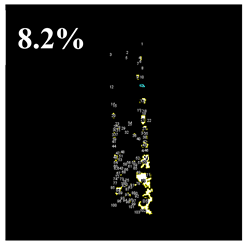 |
| 60 °C | 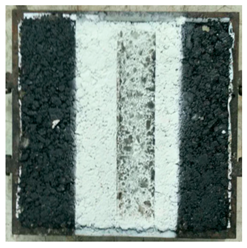 |  | 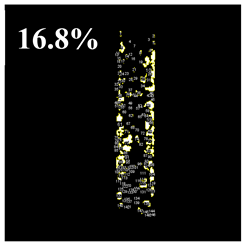 |
Disclaimer/Publisher’s Note: The statements, opinions and data contained in all publications are solely those of the individual author(s) and contributor(s) and not of MDPI and/or the editor(s). MDPI and/or the editor(s) disclaim responsibility for any injury to people or property resulting from any ideas, methods, instructions or products referred to in the content. |
© 2023 by the authors. Licensee MDPI, Basel, Switzerland. This article is an open access article distributed under the terms and conditions of the Creative Commons Attribution (CC BY) license (https://creativecommons.org/licenses/by/4.0/).
Share and Cite
Wang, K.; Lu, Z.; Zou, Y.; Zhu, Y.; Yu, J. Preparation and Performance Characterization of an Active Luminous Coating for Asphalt Pavement Marking. Coatings 2023, 13, 1108. https://doi.org/10.3390/coatings13061108
Wang K, Lu Z, Zou Y, Zhu Y, Yu J. Preparation and Performance Characterization of an Active Luminous Coating for Asphalt Pavement Marking. Coatings. 2023; 13(6):1108. https://doi.org/10.3390/coatings13061108
Chicago/Turabian StyleWang, Kaifeng, Ziyu Lu, Yingxue Zou, Yunsheng Zhu, and Junhui Yu. 2023. "Preparation and Performance Characterization of an Active Luminous Coating for Asphalt Pavement Marking" Coatings 13, no. 6: 1108. https://doi.org/10.3390/coatings13061108
APA StyleWang, K., Lu, Z., Zou, Y., Zhu, Y., & Yu, J. (2023). Preparation and Performance Characterization of an Active Luminous Coating for Asphalt Pavement Marking. Coatings, 13(6), 1108. https://doi.org/10.3390/coatings13061108






